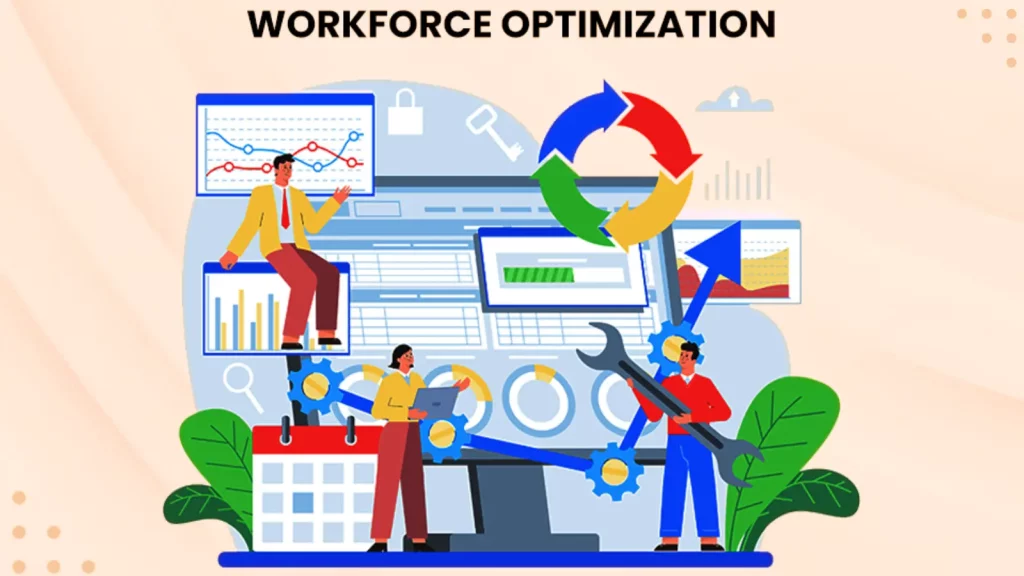How Workforce Optimization Supports Business Continuity Planning
How Workforce Optimization Supports Business Continuity Planning
Blog Article
Workforce Optimization: Enhancing Collaboration and Communication
In today's fast-paced company world, staying ahead of the bend is more crucial than ever. One effective tool that could help corporations gain a competitive edge is predictive analytics. By leveraging data to forecast potential styles and behaviors, agencies can make more informed conclusions and improve their workforce efficiently. But how precisely does predictive analytics may play a role in workforce optimization, and why should your business treatment?
Predictive analytics is revolutionizing the way businesses control their employees. It enables organizations to foresee potential staffing needs, increase employee efficiency, and reduce turnover rates. By knowledge the habits and trends within your workforce, you may make strategic conclusions that may gain both your workers and your bottom line.

Understanding Predictive Analytics
Predictive analytics requires applying traditional information, unit learning calculations, and mathematical models to predict potential outcomes. In the situation of workforce optimization , this means examining previous staff knowledge to outlook potential workforce trends. This will include predicting which workers will probably keep, distinguishing prime artists, and determining the most effective situations to hire new staff.
By harnessing the energy of predictive analytics, companies may shift from reactive to positive workforce management. Rather than waiting for issues to happen, firms can anticipate them and get activity before they affect the organization.
Increasing Worker Performance
One of many important advantages of predictive analytics is their ability to enhance worker performance. By studying information on employee behavior, productivity, and involvement, organizations may identify facets that donate to large performance. This information may then be properly used to produce targeted training applications, collection practical efficiency goals, and give individualized feedback to employees.
For instance, if the information demonstrates workers who get regular feedback perform greater, managers can implement more frequent check-ins and performance reviews. Likewise, if certain abilities are identified as important for achievement in a particular role, targeted training programs could be created to make certain all personnel have the necessary competencies.
Lowering Turnover Charges
Employee turnover is really a substantial concern for a lot of businesses, resulting in improved employment expenses and lost productivity. Predictive analytics can help address this dilemma by pinpointing personnel who are prone to making and pinpointing the factors that lead to their dissatisfaction.
By understanding the reason why behind worker turnover, organizations can take hands-on measures to enhance retention. This could include giving more aggressive salaries, providing options for job progress, or handling office culture issues. By lowering turnover prices, businesses may cut costs and keep an even more secure and skilled workforce.

Optimizing Staffing Degrees
Another important request of predictive analytics is optimizing staffing levels. By examining old information on worker hours, task timelines, and customer need, corporations can estimate potential staffing wants more accurately. This assures they have the right amount of employees at the best time, avoiding overstaffing or understaffing issues.
As an example, if the data shows that customer need peaks during particular situations of the year, companies can hire temporary staff or regulate employee schedules to meet up this demand. This not only increases client satisfaction but in addition assists control job prices more effectively.
Improving Recruitment Methods
Predictive analytics may also perform a crucial role in improving recruitment strategies. By analyzing knowledge on previous hires, businesses may recognize designs and tendencies that lead to successful hires. These records may be used to refine work descriptions, goal the right candidates, and streamline the recruitment process.
As an example, if the data demonstrates individuals from specific skills or with certain skills are more likely to flourish in a particular role, recruiters can target their efforts on attracting these individuals. Moreover, predictive analytics can help recognize possible red flags during the selecting method, such as for instance candidates with a history of job-hopping or bad performance in previous roles. Report this page